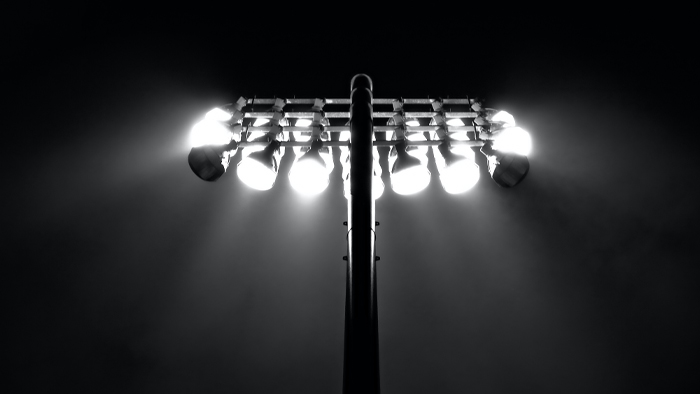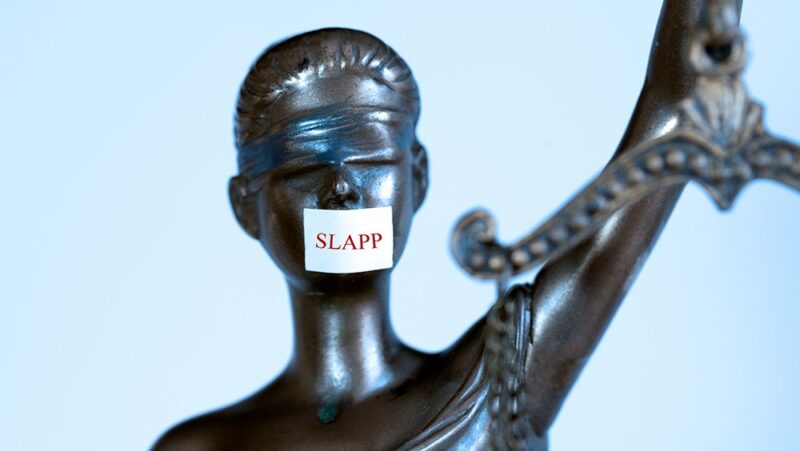Perspective: Supreme Court Shouldn’t Make it Riskier to Scrutinize Prominent People

“I am not a role model. I’m not paid to be a role model. I’m paid to wreak havoc on the basketball court.”
So said former professional basketball player Charles Barkley in a 1993 Nike commercial that acknowledged the outsized role athletes — and celebrities — play in society. The public debate around the ad demonstrated the extent to which people believe athletes are role models, showing why we need to be able to scrutinize their actions.
That’s why it is important that the U.S. Supreme Court recently declined to hear a request to overturn its 1964 decision in New York Times v. Sullivan, a landmark case that made it more difficult for those in power to win defamation lawsuits.
The Sullivan case arose amid the heat of the civil rights movement, after an advertisement in The New York Times asked people to contribute to the fight against “Southern violators of the Constitution.”
Though not identified in the advertisement, Montgomery, Ala., Police Commissioner L.B. Sullivan seized on a few minor inaccuracies and sued the paper for defamation, seeking $500,000 in damages. An Alabama jury ruled in his favor. The Alabama Supreme Court upheld this verdict.
Then the U.S. Supreme Court overturned the Alabama courts and flipped defamation law on its head. While those in power previously had more protection from defamation than private citizens, it would now be harder for them to win a defamation lawsuit. Justice William Brennan Jr. identified that “erroneous statement is inevitable in free debate” and there must be “breathing space” for free speech to remain a cornerstone of democracy.
His solution was to require public officials — elected officials or government employees — demonstrate that a false and defamatory statement about them also be made with some degree of “fault.” Innocent or negligent errors would not be punished. “Actual malice” — statements known to be false or stated with reckless disregard for their truth or falsity — would.
The actual malice standard has proven extremely complex in application. It has also been controversial, especially after a series of cases over the next decade extended it to public figures — people who are not public officials but are famous or have inserted themselves into a public debate. It often creates an insurmountable barrier to these figures’ success in court, limiting the extent to which those scrutinizing their behavior might have to self-censor for fear of being sued.
This spurred a movement to narrow Sullivan so it again applies just to public officials or overturn it altogether. Two sitting Supreme Court Justices — Clarence Thomas and Neil Gorsuch — have stated their desire to reexamine the ruling, raising concern among supporters of actual malice when two cases were presented to the court offering that opportunity. But it takes four justices to agree to hear a case, a threshold that wasn’t reached.
This is good because Sullivan remains as important today as in 1964.
Opponents argue that journalism has changed so much since then that the actual malice standard now promotes misinformation over truth. They claim that, among other things, social media and the 24-hour news cycle have resulted in fewer fact checkers and editors. They also claim reporters will intentionally not research claims so they can say they didn’t know or suspect a statement was false. They also argue that prominent figures don’t deserve less protection than the average person.
They’re wrong. Journalists don’t hide behind actual malice — they strive for excellence in serving the public. Making it easier to sue journalists would weaken their valuable service to local communities. Beyond that, overturning Sullivan would make it easier to sue anyone who speaks out on matters of public concern. Public officials and public figures would increasingly file lawsuits against those speakers if they thought they had a greater chance of winning. For the average person, even successfully defending a lawsuit — or an adverse jury verdict — would be financially crippling, which might result in fewer people engaging in public debate.
And the reasons for making it harder for a public official to sue for defamation apply to public figures as well. Both have access to media outlets that allow them to defend themselves via responsive speech rather than the courts. Both have outsized power and influence in society that most people don’t.
It is this latter point that Sullivan opponents miss. Yes, journalism has changed since 1964. So has celebrity. Celebrity culture and celebrity advocacy have increased exponentially since then and exploded even more since Charles Barkley’s Nike advertisement in 1993. During the current pandemic, Barkley has been a vocal supporter of vaccinations, while current NBA player Kyrie Irving and others have been vocal opponents. This is just one example of athletes and other celebrities taking stands on political and societal issues as we watch, defend and make life choices based on what our heroes say and do. Regardless of their roles and whether they intend to influence, they do, and we need the breathing space to scrutinize them.
We need Sullivan’s “actual malice” standard to do that.
Kevin Goldberg is First Amendment specialist for the Freedom Forum. He can be reached at [email protected].
Is the TikTok Law a Violation of the First Amendment?
How Anti-SLAPP Laws Protect Your Right to Free Speech
Related Content

